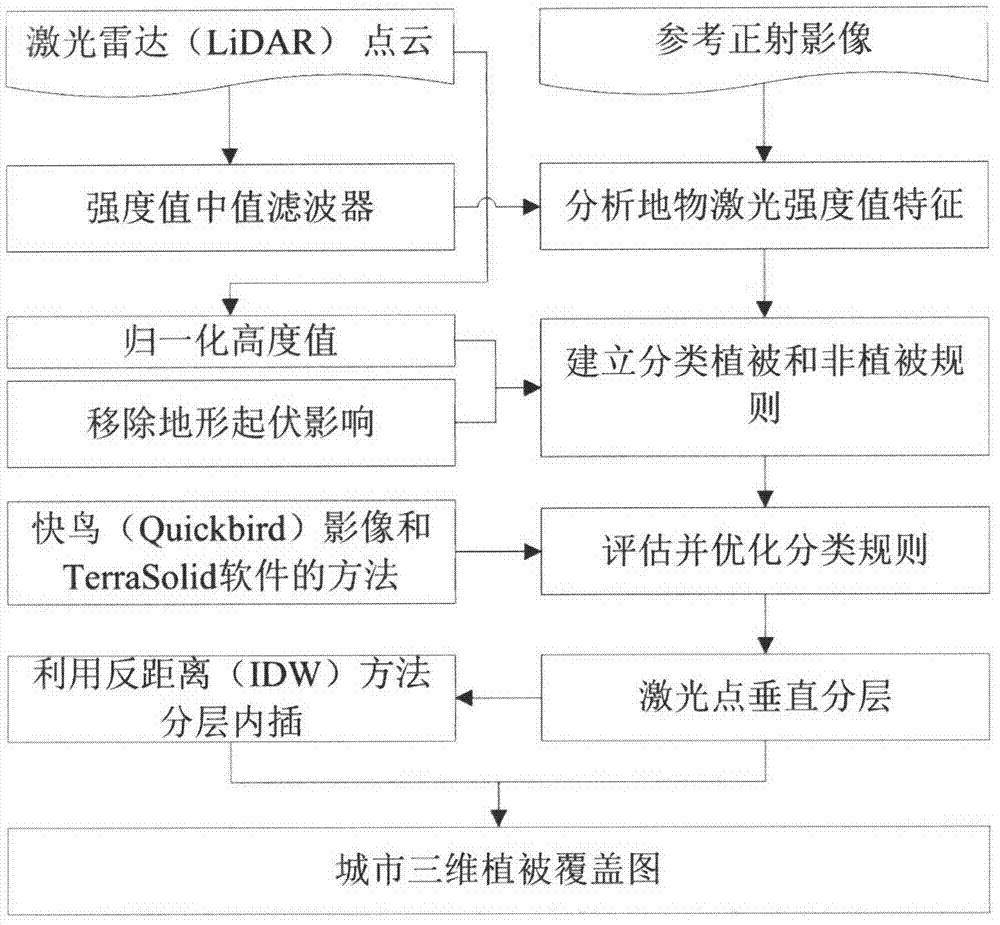Method for utilizing airborne laser radar point cloud to extract urban vegetation three-dimensional coverage map
An airborne lidar and laser point technology, which is applied in the direction of utilizing re-radiation, re-radiation of electromagnetic waves, measuring devices, etc., can solve problems such as the reduction of the surface area, and achieve the effect of improving the ecological living environment quality of urban residents
- Summary
- Abstract
- Description
- Claims
- Application Information
AI Technical Summary
Problems solved by technology
Method used
Image
Examples
Embodiment Construction
[0027] Below in conjunction with accompanying drawing and specific embodiment, further illustrate the present invention, should be understood that these embodiments are only for illustrating the present invention and are not intended to limit the scope of the present invention, after having read the present invention, those skilled in the art will understand various aspects of the present invention Modifications in equivalent forms all fall within the scope defined by the appended claims of this application.
[0028] according to figure 1 The method flow shown, with "Nanjing Peace Park three-dimensional green coverage extraction" as an application example, further clarifies the present invention:
[0029] The first step is data preprocessing. A median filter based on the intensity information of airborne LiDAR point cloud data is established, and the median filter is used to filter the point cloud data to remove intensity noise. The ground elevation (DEM) value is subtracted...
PUM
 Login to View More
Login to View More Abstract
Description
Claims
Application Information
 Login to View More
Login to View More - R&D
- Intellectual Property
- Life Sciences
- Materials
- Tech Scout
- Unparalleled Data Quality
- Higher Quality Content
- 60% Fewer Hallucinations
Browse by: Latest US Patents, China's latest patents, Technical Efficacy Thesaurus, Application Domain, Technology Topic, Popular Technical Reports.
© 2025 PatSnap. All rights reserved.Legal|Privacy policy|Modern Slavery Act Transparency Statement|Sitemap|About US| Contact US: help@patsnap.com



